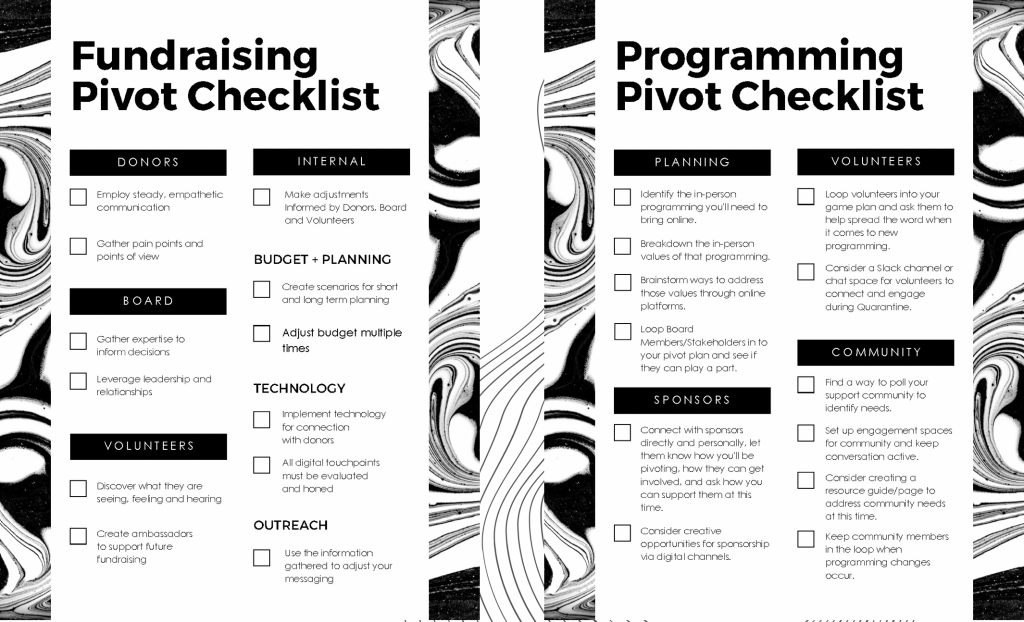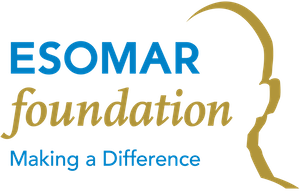
Pivoting your organization’s operations during a global crisis is no simple matter. On top of event cancellations, funding setbacks, and everything in between, there’s the basic reality that your staff and stakeholders have their own unique personal obstacles occurring concurrently to the evolving tasks at hand. In our webinar session, hosted by the ESOMAR Foundation, we set some clear and actionable goal posts for NPOs struggling to find an equilibrium in the wake of the COVID-19 pandemic with the lives and livelihoods of nonprofit professionals in mind. Here are some of the highlights from that conversation:
Current Realities for NPOs
You’re not alone: charitable organizations across disciplines and sectors are facing unforeseen challenges during the pandemic, the impacts of which will likely be lasting.
- CNN reports that the pandemic could mean the end for many NPOs and charities as their major fundraising events are cancelled and usual sources of donation income are put on hold.
- As of March 2020, Nonprofit Quarterly was reporting 86% of NPOs had already made changes to their programming, including fundraising events.
- Charity Navigator reported that, as of mid-April, 83% of nonprofits reported they are suffering financially. Of those nonprofit organizations experiencing financial hardship, the average expected decline in revenue is 38% for the April -June time period.
In preparation for our presentation we asked a number of nonprofits, ranging in mission and aid sector, for feedback on their current challenges relating to COVID. By and large, adjusting programming to a remote environment has been the most difficult, with one respondent stating, “our biggest challenge has been to move F2F (face to face) to digital.” In this same vein, event cancellations, and especially fund-raising focused events, are going to have major effects on organizational budgets. Most respondents said something along the lines of, “we are fundraising but have changed our tactics considerably.” And, out of all of the responses we received, most mentioned having already adjusted their budget to prepare for the challenges now and ahead with some saying they’ve had to adjust as much as 100%.
The Fundraising Pivot
Many of us are unsure how to move forward with fundraising or even if fundraising is possible right now. While generating revenue isn’t ideal at this time, it’s not impossible but it will require a rethinking of the tactics we’ve used in the past. For those in a major gifts capacity, the ideal turn should be toward donor retention and relationship building. The Chronicle of Philanthropy echoes this idea, saying, “building and keeping strong connections with our donors by crafting clear, thoughtful plans and increasing individual outreach is crucial.” For this reason, taking steps to solidify and strengthen donor relations is first and foremost on our pivoting plan. Some tips for getting these conversations going:
- Reach out to check in from a place of empathy.
- You decide the cadence of communication based on your relationships.
- Talk about them, not you. Your needs will come later.
- Gather points of view to inform your planning.
Once your donors have been looped into your organization’s communications, move on to your community. Everyone in your organization’s eco-system has something to contribute to your plan of action moving forward. Stakeholders and Boards are especially critical at this time; their expertise and diverse backgrounds can be leveraged to assist with organizational leadership and funding tactics. Similarly, your volunteers have an important, on-the-ground perspective of the most pressing needs impacting your community and their insight can inform your planning in an indelible way. Be creative with the venues you use to connect with these communities — social media, emails, phone calls; whatever is least likely to alienate and most likely to create valuable touchpoints for future engagement.
Budgeting and planning will rely heavily on the feedback you’ve just gleaned. Take a realistic approach when analyzing your current revenue streams and adjusting your budgets; know that you’ll likely continue to adjust your budget as conditions evolve. Pay close attention to your bottom line here and develop a number of possible approach scenarios addressing the myriad ways events could continue to unfold—and impact—the way you operate. Keep the lines of communication between your marketing teams and financial decision-makers open; the way you communicate as an organization will have a direct impact on the way your community responds to your needs. Remember: you control the story you tell right now about your nonprofit; make sure it’s in line with the information you’ve gathered.
Finally, take the leap to digital. With so many orgs operating on a limited staff, digital options can provide an extra hand where one is lacking. That might look like putting some extra funding into website integrations or taking advantage of automatic invoicing — whatever lightens the load and quickens the pace by which community need is addressed.
The Programming Pivot
Our big takeaway when it comes to a pivot to online programming is that moving things online isn’t just a temporary fix; it’s an investment in the long-term reach of your organization’s message. If your organization has been reluctant to try online programming, this is your wake-up call, not just for diversifying your offerings but also for reaching an increasingly global community. While we’re all experiencing waves of webinar fatigue, by and large, you have the most captive online audience for your message right now and it is THE time to get them engaged and involved with the work you do.
In our aforementioned survey of fellow non-profit organizations, we found that, overwhelmingly, event cancellations and remote programming adjustments were the biggest obstacle organizations said they are currently facing. Issues such as maintaining client relationships and content sensitivity were especially popular when we asked what obstacles were limiting online programming offerings. While a true programming pivot is going to be different for everyone there’s one thing we do know: it won’t just be webinars. While webinars are a useful tool in the online programming pivot game plan, they just don’t cut it when it comes to recreating the experience of in-person events in toto. Your job now, as the pilot of your organization’s programming pivot, is to uncover what makes your events special, engaging, and impactful and then work to find the online tools that will mirror or enhance those qualities—not just the content but the feeling and overall experience of being part of your larger mission.
How can one home in on those qualities and figure out what your community needs from your organization right now? One easy way is to make those open channels of communication we described in our fundraising pivot work as pipelines for community feedback and insights. If you have a community Facebook or LinkedIn group you can post a brief survey or ask open-end questions to get a conversation going on the platform which will double as an engagement opportunity for your community. You might also check in with any internally facing stakeholder groups like volunteers, staff, and board members and just ask very directly what would be helpful to them at this time. All of these communication points need to work both ways: they should deliver information that informs your pivot, but they should also keep your extended community engaged with your mission and feel supported by your cause.
Once you know what your community needs and why they’re staying engaged with your cause, it’s time to figure out what online platforms are going to recreate as much of your in-person event experience and/or bring new benefits to your community’s continued engagement. One example of this is leveraging the social media platforms you might already have to become engagement spaces/event spaces…with a dash of creative problem-solving. During our presentation an attendee asked how an NPO that relies on exhibitor space to feature sponsors might make a programming pivot — in this case, a well-oiled social media account can provide a venue, help boost sponsor branding, and have a lasting value for your community all in one. Stakeholders and marketing teams too will have much to offer when it comes to bringing things online; let the connections and gifts that your board members bring to the table inform the way you perform outreach on these new platforms.

We truly feel that a pivot IS for NPOs and charities of every shape and size but it will take an evolutionary approach, a community-focused response, and plenty of grace for organizational staff and support alike to get there. Focus on what will maximize impact without asking for too much additional bandwidth from those implementing changes and rely on your Board to drive the decisions that risk long-term organizational health. Organizations that work as a collective force will be the ones who walk through the line of fire and come out stronger on the other side.
Missed the webinar? You can now access the “From Panic to Pivot: A Practical Guide to Remote Programming (…and Fundraising) for NPOs and Charitable Organizations Operating during Times of Crisis” webinar recording and slides on-demand!
About the Author:

Jessica Sage, Marketing and Events Director at Women in Research
